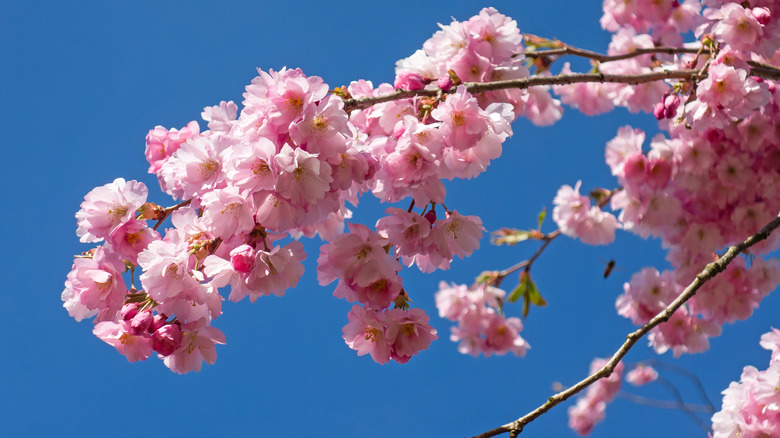How To Prune A Dwarf Weeping Cherry Tree
How Tall Does a Dwarf Weeping Cherry Tree Get?
When shopping for a dwarf weeping cherry tree (Prunus subhirtella), don't expect to see a tree that one of the Seven Dwarfs would feel comfortable standing against. The word dwarf is misleading, because **the dwarf weeping cherry tree grows upwards of 15 feet.**
Although it never bears fruit, the dwarf, a smaller version of the regular cherry tree (Prunus avium), is purely ornamental. It presents a vivid picture, because the weeping branches, when loaded with pink or white cherry blossoms, cascade downward. When planted in full sun, the tree thrives best in USDA hardiness zones 5 through 8.
Natural vs. Grafted Weeping Cherry Trees
Dwarf weeping cherry trees can be natural or grafted. Discovering which type is growing in your garden dictates how you prune it. Gently run your hand along the trunk from the bottom up; if you come to a knob, the tree is a graft from a closely related species, according to Kansas State University.
An example of a grafted dwarf weeping cherry tree, the Prunus 'Snofozam', also known as the Snow Fountain, grows in USDA zones 5 through 8. Everything below the knob is related to another type of tree and won't affect the blossoms.
Because the dwarf weeping cherry tree is so dense with branches and blooms, keep up with pruning maintenance to avoid infestation by insects and diseases, according to the Missouri Botanical Garden. While the tree requires only yearly pruning, do so to allow the sun to shine through and prune it for air circulation between the branches to control pests and keep your tree healthy.
Tip
Be gentle when pruning and avoid nicks to the branches, which can open them up for insects and disease. And always work with sanitized tools.
When to Prune a Dwarf Weeping Cherry Tree
**Wait until your tree enters dormancy to prune it.** That happens when the last leaf has fallen and all the branches are bare, usually in the late fall. Another option is to prune in the early spring before the buds emerge.
If you have a grafted tree, prune it in the fall to avoid wind damage to the branches at the center of the canopy, suggests Rennie Orchards. Avoid pruning in the winter because the tree is suffering already from the cold, and you don't want to stress it out even more.
Trim the crown and untangle the interwoven branches to help balance the tree and keep it from toppling over during heavy winter winds or tornado-strength blasts.
Don't Let Your Tree Sweep the Ground
During the year, if your weepers start sweeping the ground, do a little maintenance to pick them up to at least 6 inches off the ground. It won't hurt the tree, and you'll avoid insects crawling onto the branches from the ground.
If your tree is grafted, prune everything below the graft knob, because it has no connection to the weeping cherry tree and simply saps energy from the growing tree.
Warning
Don't cut branches attached to the trunk. They are part of the tree's structure, and cutting them may ruin the "weep" the tree is known for.
How to Prune a Grafted Weeping Cherry Tree
Weeping cherry trees branches arc in the direction of the ground. If your tree is grafted and you discover branches reaching skyward, lop them off, especially if they're in the center of the tree.
Look for branches that are crossing one another, show signs of disease or are damaged, and cut them away. Stand back and look at the shape of the tree. You want to maintain the umbrella appearance, and pruning should accomplish that.
Pruning a Natural Dwarf Weeping Cherry Tree
Follow the instructions for pruning a grafted tree until you get to the direction the branches are growing. If they're pointing upward, leave them alone. They'll eventually "weep," joining in the cascading effect the tree is known for.
